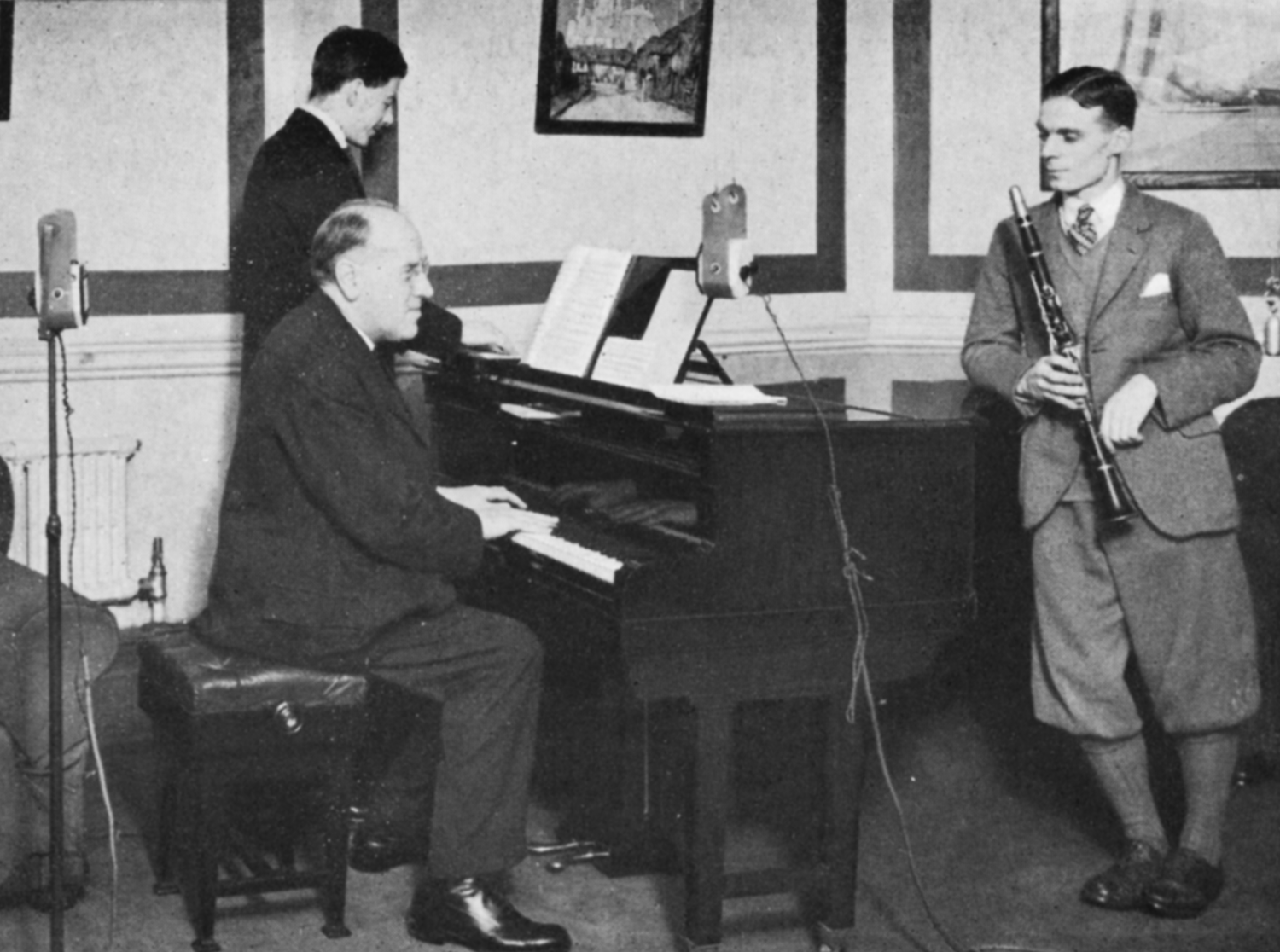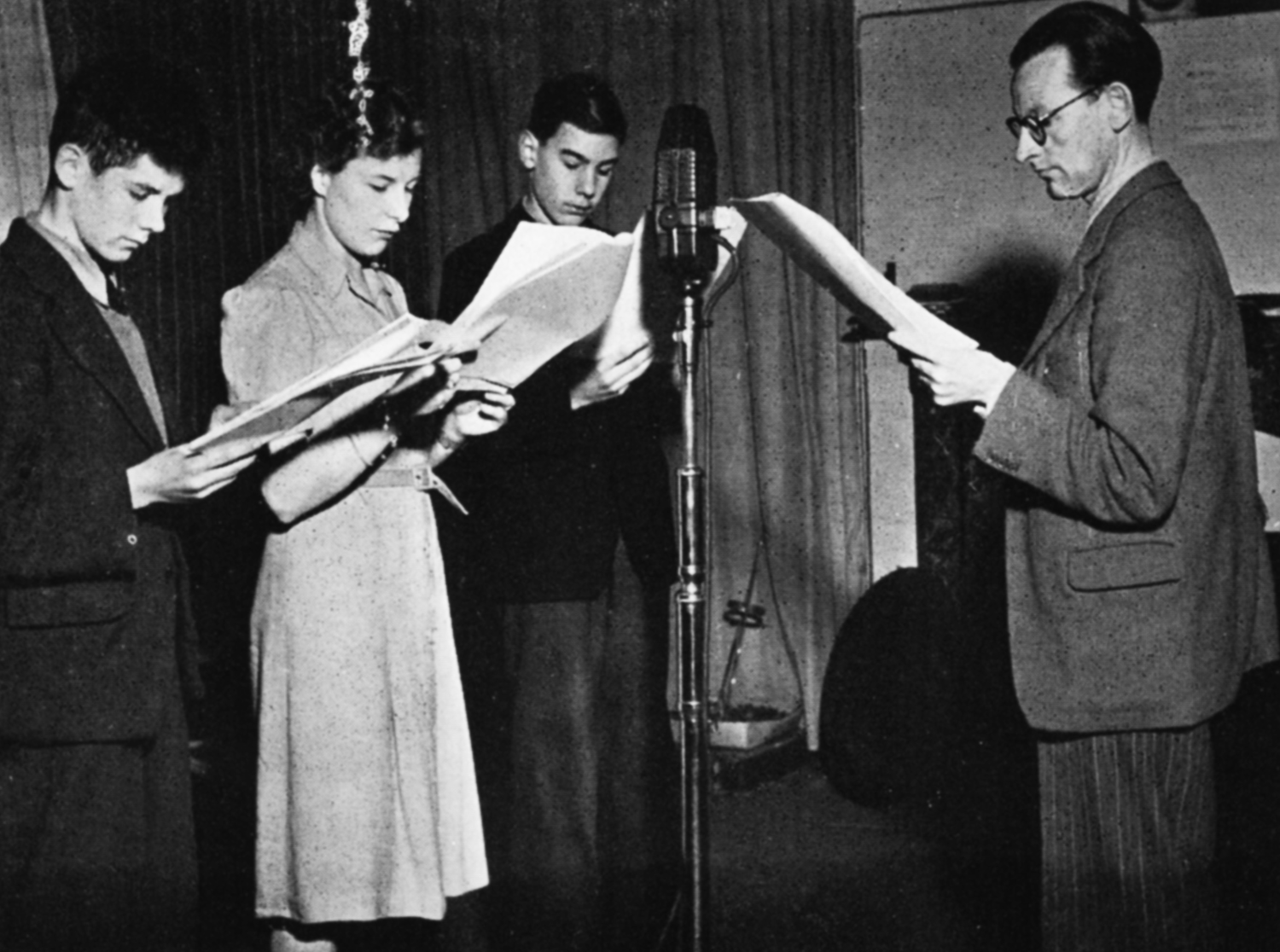Through a generation youth has been served
ONE afternoon in April, 1924, Sir Walford Davies talked and played to schools. Programmes then normally began later in the day. Two other authorities with the gift of imparting knowledge easily, Sir William Bragg and Sir Oliver Lodge, spoke to schools that spring. In this informal, almost casual way, new horizons were opened, and School Broadcasting, which is now a part of the national system of education, began: bringing outstanding men and women to the microphone, however, is still one of the main things that it seeks to do.
The children listening in the first picture are fathers and mothers now. There are 16,000 listening schools; the number grows each year. With a larger audience has gone increased specialization: ‘Music and Movement’, ‘World History’, English, Geography, Science, and Modern Languages. Schools have their own news commentaries, travel talks, orchestral concerts, a full broadcasting service in miniature, in fact. Mary Somerville, Director of School Broadcasting from 1929-1947, has been its architect and inspiration.







